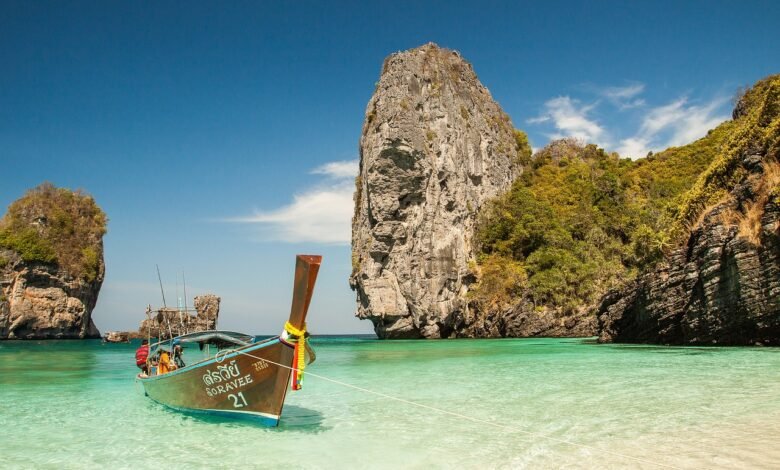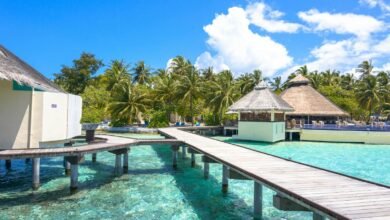
While the Maldives is often associated with luxury resorts, there’s so much more to explore beyond its turquoise waters and sandy beaches. Island hopping allows travelers to experience the rich culture, unique traditions, and everyday life of Maldivian locals. This guide will walk you through the best ways to island hop and what cultural experiences await on each island.
1. Why Island Hopping?
Island hopping in the Maldives offers a chance to step off the typical resort path and experience authentic Maldivian culture. Local islands offer a different perspective, filled with traditional crafts, cultural events, and local food that’s unique to the Maldives. For those looking to immerse themselves in island life, hopping between local islands is the perfect way to gain insight into the true Maldivian way of life.
2. How to Get Around the Islands
Several options are available for traveling between islands:
- Public Ferries: Affordable but limited schedules. Ferries mainly connect nearby islands and require planning around fixed times.
- Speedboats: Faster and commonly used for shorter distances, though a bit pricier. Many guesthouses and hotels offer speedboat transfers between islands.
- Domestic Flights: Ideal for longer distances, especially if you’re visiting islands in different atolls. Domestic flights connect several key atolls and are relatively quick.
- Tip: Book transportation in advance, especially during the high season, as boats and flights can fill up quickly.
3. Best Local Islands for Cultural Experiences
Each local island has its own charm, offering different ways to engage with Maldivian culture. Here are some popular local islands for cultural exploration:
Maafushi
Located in Kaafu Atoll, Maafushi is one of the most popular local islands for travelers. With a mix of guesthouses, local shops, and eateries, Maafushi offers an excellent introduction to local Maldivian life.
- Cultural Highlights: Local handicrafts and souvenir shopping, traditional Maldivian dining spots.
- Popular Activities: Snorkeling, dolphin-watching tours, and visiting nearby sandbanks.
- Accommodation: Many affordable guesthouses make it an ideal island for budget-conscious travelers.
Thulusdhoo
Known for its relaxed vibe and surf culture, Thulusdhoo is famous for its surfing spots, particularly Cokes Surf Point. Located in Kaafu Atoll, Thulusdhoo is also known for its coconut production and fishing industry.
- Cultural Highlights: Visiting local workshops to see coconut processing, exploring small shops selling surf gear and local crafts.
- Popular Activities: Surfing, snorkeling, and kayaking.
- Accommodation: Guesthouses and small hotels provide cozy accommodations, often with stunning ocean views.
Guraidhoo
Guraidhoo, in South Malé Atoll, is known for its laid-back atmosphere and charming traditional lifestyle. The island is a great place to experience local crafts and traditional boat-building.
- Cultural Highlights: Watching local craftsmen at work, exploring the colorful streets filled with local markets.
- Popular Activities: Diving, cultural tours, and visiting local beaches.
- Accommodation: Smaller, family-owned guesthouses add a personal touch to your stay.
Dhigurah
Located in Alifu Dhaalu Atoll, Dhigurah is a longer island with pristine beaches and an authentic village area where you can interact with locals. It’s also one of the best spots for whale shark watching.
- Cultural Highlights: Exploring village life, traditional music, and crafts.
- Popular Activities: Whale shark snorkeling tours, nature walks, and beach picnics.
- Accommodation: Dhigurah has a mix of guesthouses and boutique hotels.
4. Cultural Etiquette for Travelers
Respecting local customs is essential when visiting the Maldives’ local islands, as they are primarily Muslim communities.
- Dress Modestly: Cover shoulders and knees when outside beach areas, and swim only in designated “bikini beaches” on local islands.
- Respect Prayer Times: Be mindful of local prayer times, as shops and businesses may close temporarily.
- Public Displays of Affection: Avoid public displays of affection, as this is not part of the local culture.
- Tip: A friendly attitude and respect for local customs go a long way. The Maldivians are welcoming and often eager to share their culture with respectful visitors.
5. Sample Itinerary for Island Hopping
For a well-rounded cultural experience, here’s a sample itinerary:
- Day 1-2: Maafushi – Start with Maafushi to enjoy local crafts and food.
- Day 3-4: Thulusdhoo – Head to Thulusdhoo for surfing and to explore its coconut production.
- Day 5-6: Guraidhoo – Experience traditional craftsmanship and quiet village life.
- Day 7: Dhigurah – Finish with whale shark spotting and a final island experience.
6. Local Cuisine and Dining
Exploring Maldivian cuisine is an essential part of island hopping. Local food features plenty of fresh fish, coconut, and tropical spices. Some must-try dishes include:
- Mas Huni: Shredded tuna mixed with coconut and served with flatbread for breakfast.
- Garudhiya: A fish soup often served with rice, lime, and chili.
- Boshi: A banana flower salad with coconut and spices.
- Tip: Try local eateries instead of resort restaurants to experience authentic Maldivian flavors.
Conclusion
Island hopping in the Maldives is a wonderful way to experience the country beyond its luxury resorts, diving into the heart of local traditions, flavors, and daily life. From Maafushi to Dhigurah, each island offers unique insights into the culture and beauty of the Maldives. Plan ahead, respect local customs, and immerse yourself in the charm of these islands for a memorable cultural journey.



